Explore Murun-Kuren - Mongolia Travel, Asia
Nestled in the heart of Khuvsgul province, Murun is a charming gateway to some of Mongolia’s most breathtaking natural landscapes and rich cultural experiences. As the capital of Khuvsgul, Murun is more than just a stopover on the way to the famed Khuvsgul Lake. It’s a destination brimming with history, hospitality, and hidden gems waiting to be explored. Whether you’re a seasoned traveler or new to Mongolia, Murun offers a perfect blend of adventure and tradition. From its bustling markets to its tranquil monasteries, there’s something here for every type of traveler.
Population: Approximately 40,000 in 2017.
Economy: Murun’s economy primarily relies on agriculture, livestock, and tourism. The town’s growth is supported by its natural resources and increasing interest in its scenic landscapes and cultural heritage.
Landmarks: Famous for the Khuvsgul Lake, Danzandarjaa Monastery, and Khövsgöl Province Museum.
Mongolia
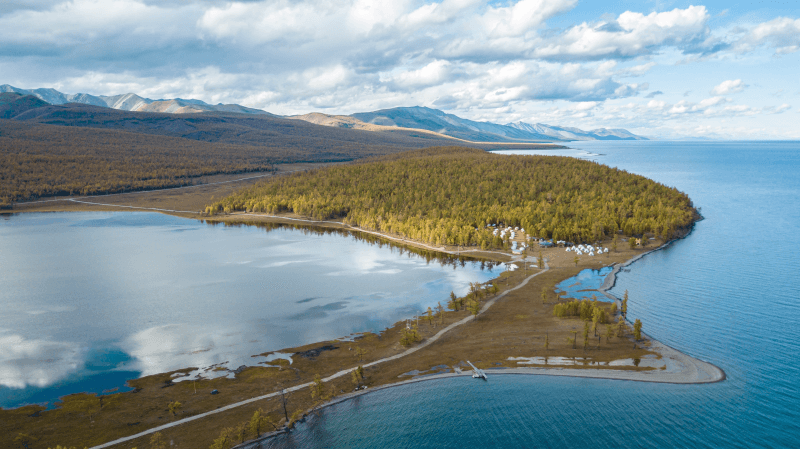
Overview of Murun-Kuren
History & Cultural Influence
Murun's story is deeply intertwined with Mongolia’s vast and varied history. Founded relatively recently in the early 19th century, the town was initially a military post. Over time, it evolved into a vibrant cultural and administrative hub of Khuvsgul province. The influence of Mongolian Buddhism is evident in the town’s architecture and daily life, with the Danzadarjaa Monastery serving as a poignant reminder of the region’s spiritual heritage. Throughout its history, Murun has been a meeting point for different ethnic groups, including the Khalkha Mongols and the indigenous Darkhad people. This cultural melting pot is reflected in the town’s festivals, crafts, and everyday life, offering visitors a glimpse into Mongolia’s rich and diverse cultural tapestry.
Interaction with The Locals
Murun, the capital of Khuvsgul province, is home to around 40,000 residents. The town's population is a blend of various ethnic groups, primarily Khalkha Mongols, with a significant presence of the Darkhad and other indigenous communities. The citizens of Murun are known for their warm hospitality and deep connection to Mongolian traditions, offering visitors an authentic glimpse into the region’s cultural heritage.
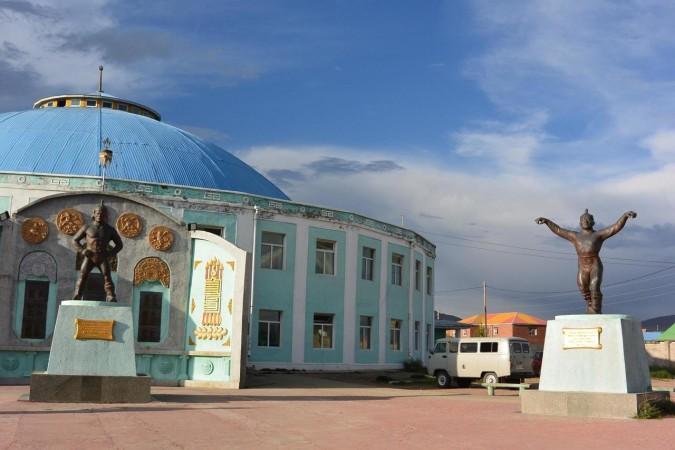
Murun-Kuren, Khuvsgul province - © Mongolia Tourism
Top Attractions in Murun
Khuvsgul Lake
No visit to Murun is complete without experiencing the majesty of Khuvsgul Lake. Known as the “Blue Pearl of Mongolia,” this vast freshwater lake is a haven for nature lovers. The crystal-clear waters, surrounded by dense forests and rugged mountains, offer a serene escape from the hustle and bustle of everyday life. Whether you’re interested in boating, fishing, or simply soaking in the natural beauty, Khuvsgul Lake is a must-see site in Mongolia.
Danzandarjaa Monastery
For a touch of spirituality and history, the Danzadarjaa Monastery stands as a testament to Mongolia’s enduring Buddhist traditions. Established in the 19th century, this monastery is not only a place of worship but also a cultural center where you can learn about Mongolian Buddhism and its role in local life. The peaceful atmosphere and stunning architecture make it a worthwhile visit for those seeking a deeper connection to the region’s heritage.
Khövsgöl Province Museum
Visit the Khövsgöl Province Museum to learn more about the history and culture of the area. Here, you’ll find a well-curated collection of artifacts that tell the story of Murun and its surrounding areas. From traditional clothing and tools to exhibits on the local wildlife, the museum offers a comprehensive overview of the region’s natural and cultural history.
Hidden Gems of Murun
While Murun’s major attractions draw many visitors, the town also harbors some lesser-known gems that are equally captivating.
- Erdenebulgan Hill: Located just outside the town, Erdenebulgan Hill offers panoramic views of Murun and the surrounding countryside. A short hike to the top rewards you with a breathtaking vista, especially during sunrise or sunset.
- Deer Stones: Hidden in the outskirts of Murun, the Deer Stones are ancient, mysterious monuments that date back to the Bronze Age. These standing stones are carved with intricate images of deer and other symbols, believed to have been created as memorials or religious totems. The site is quiet and often overlooked by tourists, making it a peaceful place to explore the country’s rich archaeological heritage.
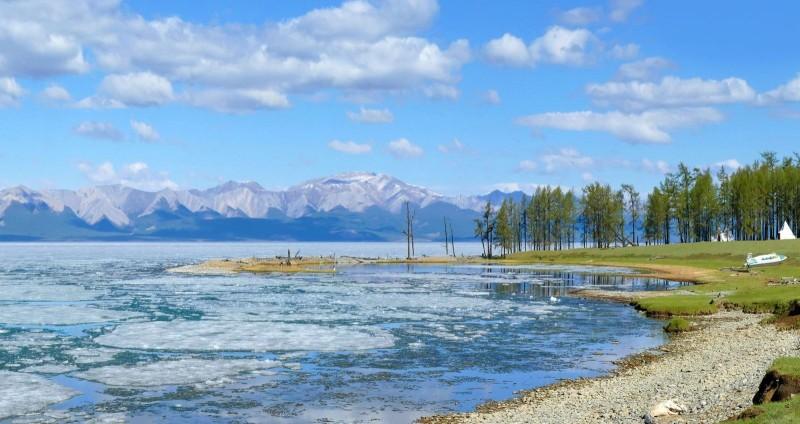
Khuvsgul Lake in Spring - © Britannica
Must-Try Dishes in Murun
Murun offers a culinary experience that reflects the heart of Mongolian cuisine. Whether you're a food enthusiast or simply curious about local flavors, these must-try local dishes will give you a true taste of the region.
- Buuz (Mongolian Steamed Dumplings): Steamed dumplings stuffed with spiced beef or goat are called buuz. These savory bites are a staple in Mongolian households and are especially popular during the Naadam Festival.
- Khuushuur (Mongolian Fried Dumplings): Similar to Buuz but fried, Khuushuur is a crispy meat pastry that’s a favorite street food. Its rich, flavorful filling and crunchy exterior make it a must-try.
- Tsuivan (Mongolian Stir-fried Noodles): Tsuivan is a filling noodle meal that is stir-fried with veggies and pieces of pork. It's comfort food at its best, offering a filling and delicious meal for any time of day.
- Boortsog: Boortsog are a kind of sweet, deep-fried dough nibbles that are typically consumed with tea. They’re a popular treat and a great example of Mongolian comfort food.
- Airag (Fermented Mare's Milk): For a truly local experience, try Airag, a traditional drink made from fermented mare’s milk. It’s slightly sour and fizzy, offering a unique taste of Mongolian culture.

Boortsog - © Always Yummy
Festivals & Local Celebrations
Murun is a town rich in tradition, and its festivals offer a vibrant glimpse into Mongolian culture. Participating in these celebrations is a great way to immerse yourself in the local way of life.
Naadam Festival
The Naadam Festival is Mongolia’s most famous celebration, and Murun hosts its own version every July. The "Three Manly Games" of archery, horse racing, and wrestling are on display at this event, which honors the spirit of the Mongolian people who are nomad warriors. Attending the Naadam in Murun gives you a more intimate experience compared to the larger events in Ulaanbaatar, allowing you to get closer to the action and the locals.
Ice Festival
Held on the frozen surface of Khuvsgul Lake, the Ice Festival is a unique winter event that takes place in early March. This festival features ice sculpting, traditional games, horse sled races, and cultural performances. It’s a celebration of the harsh yet beautiful Mongolian winter and offers a rare opportunity to see Murun’s community come together in one of the most spectacular settings imaginable.
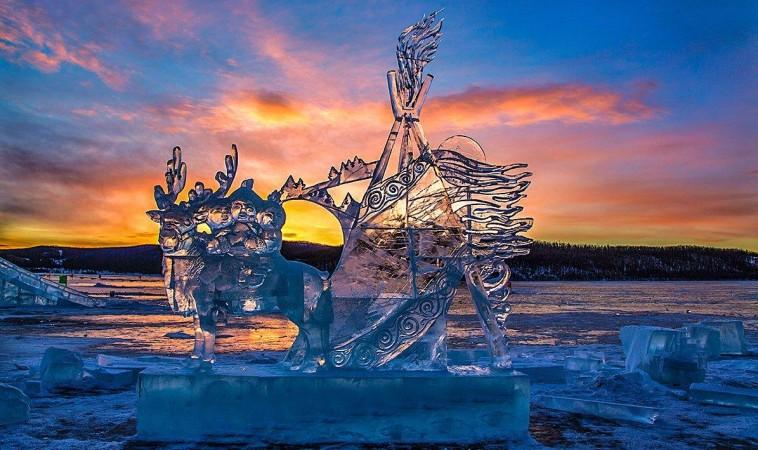
Ice sculpture at Ice Festival - © Mongolia Tourism
What to Do in Murun
Murun offers a variety of activities for every type of traveler. Here’s what you can do while visiting this charming town:
- Explore Khuvsgul Lake: Enjoy boating, fishing, or kayaking on Mongolia's stunning "Blue Pearl," surrounded by breathtaking landscapes.
- Horseback Riding: Experience the vast Mongolian steppes on horseback, a quintessential way to explore the countryside around Murun.
- Hike the Surrounding Hills: Take in panoramic views and immerse yourself in nature with hikes around Erdenebulgan Hill and other scenic spots.
- Visit Danzadarjaa Monastery: Learn about Mongolian Buddhism and explore the serene surroundings of this historic monastery.
- Visit Khövsgöl Province Museum: Dive into the local history and culture with a visit to this museum, which houses fascinating exhibits on the region’s heritage.
- Camp Under the Stars: Set up camp in the peaceful Mongolian wilderness and enjoy a night under the stars, far from the hustle and bustle of modern life.
Shopping in Murun
Shopping in Murun is a delightful blend of traditional Mongolian craftsmanship and everyday essentials, providing travelers with a chance to take home a piece of local culture.
- Local Markets: Murun’s local markets are bustling with activity and offer a wide array of products, from fresh produce to handmade crafts. One of the highlights is the Murun Market, where you can find traditional Mongolian clothing, textiles, and souvenirs like felt products and carved wooden items. These markets provide a unique shopping experience where you can directly interact with local artisans and vendors.
- Specialty Shops: For those looking for specific items, Murun has several specialty shops that cater to different needs. Artisanal stores in town sell beautifully crafted Thangka paintings, jewelry, and leather goods, each piece telling a story of Mongolian heritage. These shops are perfect for finding unique gifts or keepsakes that capture the essence of your visit to Murun.
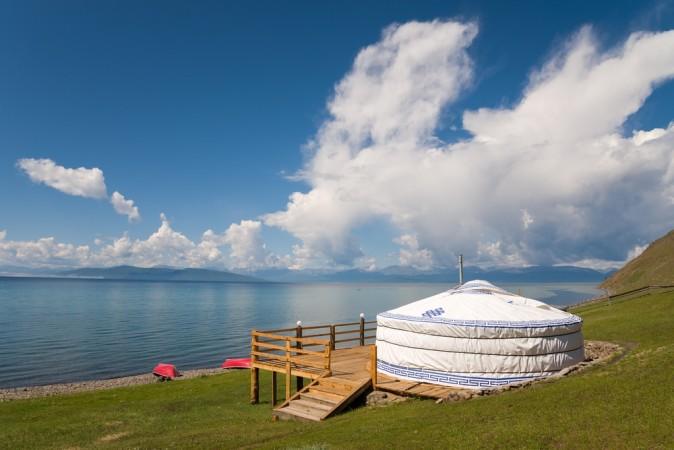
Camping at Khuvsgul Lake - © Adobe
Weather in Murun: Best Time to Visit
Murun experiences a distinct climate throughout the year, influencing seasonal tourism trends. Here’s what to expect during each season:
- Spring in Murun: Spring temperatures range from -5°C to 10°C (23°F to 50°F). As the snow melts, it’s a great time for early hiking and seeing the first blooms of the season. Spring is also a quieter period before the summer rush, offering a peaceful experience as the landscape awakens from winter.
- Summer in Murun: With temperatures ranging from 15°C to 25°C (59°F to 77°F), summer is the peak tourist season. Visitors flock to Khuvsgul Lake for boating and fishing, and the pleasant weather makes it ideal for outdoor activities and festivals like the Naadam Festival. This is the best time for exploring Murun’s natural beauty and participating in local events.
- Autumn in Murun: Autumn temperatures range from 0°C to 15°C (32°F to 59°F). This season is perfect for those who enjoy fewer crowds and the stunning fall foliage. Hiking becomes popular as the landscape transforms into vibrant hues of red and gold, and it’s a great time for photographers and nature lovers.
- Winter in Murun: With temperatures often falling below -20°C (-4°F), winter attracts tourists interested in the Ice Festival and winter sports. Snow-covered landscapes and frozen lakes provide opportunities for unique activities like ice sculpting and sledding. Be prepared for cold temperatures and plan for indoor activities as well.
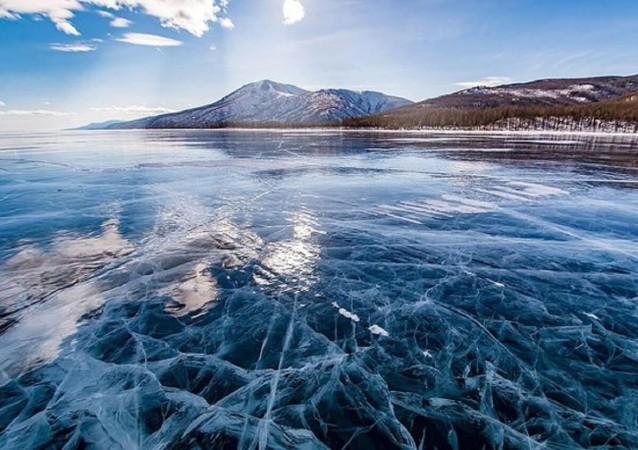
Winter in Murun - © Mongolia Tourism
Culture Etiquette in Murun
When visiting Murun, respecting local customs will enhance your experience and show appreciation for Mongolian culture. Here are some unique local customs to keep in mind:
- Traditional Greetings: In Murun, traditional Mongolian greetings involve placing your hands together and offering a slight bow. It’s also common to greet with a handshake, but always extend your hand to elders first. Showing respect in greetings sets a positive tone.
- Respect for Elders: Elders are highly respected in Mongolian culture. When meeting older individuals, stand when they enter the room and offer your seat if needed. It's an indication of respectful behavior and politeness.
- Visiting Mongolian Yurts: When entering a traditional Mongolian yurt (ger), always step in with your right foot first. It is customary for others to take off their shoes before going inside a Mongolian ger. Be mindful of the space and avoid touching personal items without permission.
- Offering and Receiving: When offering something to someone, use both hands. Similarly, accept gifts or food with both hands as a gesture of respect. This practice reflects your appreciation and understanding of local manners.
- Photographing Locals: Always ask for permission before taking photos of people, especially in rural areas. Many locals view photography as intrusive, so respecting their wishes is important for maintaining good relations.
- Eating Etiquette: During meals, it’s polite to wait for the host to start eating before you begin. If you’re offered food or drink, accept it graciously, even if you do not intend to consume it. It’s a sign of respect towards your host.
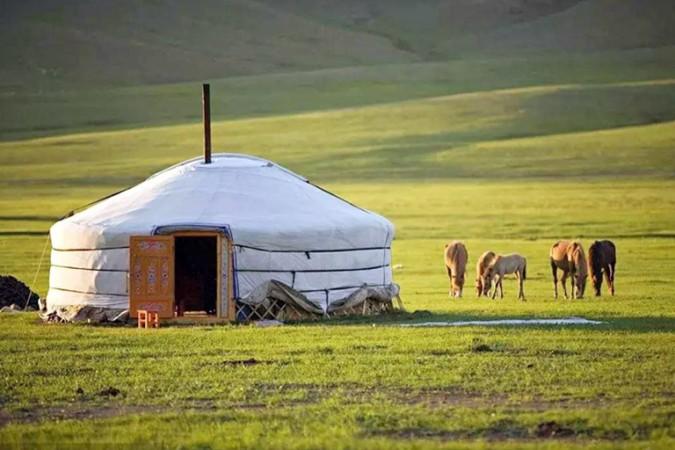
Traditional Mongolian Yurt - © China Discovery
Essential Travel Information
Getting Around Murun
- Local Taxis: Taxis are readily available in Murun and are a practical way to navigate the town. Make sure to agree on a fare before starting your journey.
- Buses: Regular bus services connect Murun with other towns and cities in Khuvsgul province, making it easy to travel further afield.
- Car Rentals: For more flexibility, renting a car is the optimal option when it's coming to Murun's vast landscape. This allows you to explore the beautiful countryside and nearby attractions at your own pace.
- Bicycle Rentals: For a more eco-friendly option, you can rent bicycles to explore Murun and its surroundings.
ATM & Banking Services
Access to financial services in Murun is straightforward, with numerous ATMs and banking options available. ATMs are conveniently located throughout the town, including at major banks and convenience stores, and accept international cards for easy cash withdrawals. Local banks provide various services, including currency exchange and account management. It’s a good idea to exchange some money before heading to more remote areas, as banks and designated exchange offices in town can assist with currency needs.
Where to Stay in Murun
- Hotels: Several hotels in Murun provide comfortable stays with amenities such as Wi-Fi, dining options, and tour services. Popular choices include Hotel Murun and Khuvsgul Hotel.
- Camping: If you’re adventurous, camping near Khuvsgul Lake or in the surrounding wilderness offers a unique way to experience the natural beauty of the area.
- Lodges and Ger camp: Eco-lodges and traditional Mongolian gers (yurts) are available for those seeking a more immersive experience in the Mongolian countryside.
Articles for you

Explore Yala National Park - Sri Lanka Travel, Asia
Tucked away in Sri Lanka’s southeastern corner, Yala National Park is where wild nature meets deep tradition. Known worldwide for its leopard population, the park is also home to elephants, sloth bears, crocodiles, and hundreds of bird species. Beyond wildlife, Yala opens doors to a cultural landscape dotted with ancient temples, Buddhist ruins, and coastal villages. For travelers seeking more than just a safari, Yala offers a chance to explore eco-tourism, local communities, and sacred heritage sites.
Population: The Yala National Park area doesn’t have a human population.
Economy: The economy around Yala National Park thrives on a blend of eco-tourism, agriculture, and local services. Safari tours, eco-lodges, and cultural experiences drive steady income for nearby towns like Tissamaharama and Kataragama, supporting thousands of families.
Landmarks: Famous for Block I of Yala and wildlife encounters, including elephants, sloth bears, crocodiles, and exotic bird species.

Explore Galle - Sri Lanka Travel, Asia
Nestled on Sri Lanka’s southern coastline, Galle is a vibrant city where history meets the sea. Its cobbled streets, colonial architecture, and serene beaches make it a must-visit destination for travelers seeking a blend of culture, adventure, and relaxation. A UNESCO World Heritage site, Galle captivates visitors with its Dutch Fort, bustling markets, and friendly locals. Whether you’re exploring the ramparts at sunset or savoring fresh seafood by the shore, Galle promises an unforgettable journey into Sri Lanka’s heritage.
Population: Approximately 113,000 in 2023.
Economy: Galle’s economy thrives on tourism, trade, and fisheries. The city’s historic fort, colonial architecture, and coastal charm draw thousands of international visitors each year, making tourism its main economic driver. Fishing remains vital for local livelihoods, supplying fresh seafood across the region.
Landmarks: Famous for the Galle Fort, Dutch Reformed Church & Maritime Museum, and Unawatuna Beach.

Explore Bentota - Sri Lanka Travel, Asia
Nestled along Sri Lanka’s southwestern coast, Bentota is a tropical paradise that blends golden beaches, vibrant culture, and thrilling adventures. Famous for its calm waters, luxury resorts, and scenic river estuary, Bentota has become a top destination for travelers seeking both relaxation and authentic experiences. From serene beach walks at sunrise to adrenaline-pumping water sports, this coastal town offers a perfect balance of leisure and exploration. With its proximity to Colombo and Galle, Bentota is easy to reach, making it an ideal stop for both short escapes and extended holidays.
Population: Approximately 37,000 in 2023.
Economy: Bentota’s economy thrives mainly on tourism, which drives local businesses such as hotels, restaurants, and wellness retreats. The town also benefits from fishing, coconut cultivation, and handicrafts like wood carving and batik textiles. Many residents rely on the growing demand for water sports and Ayurvedic treatments, making tourism the backbone of both income and employment in the area.
Landmarks: Famous for Bentota Beach, Bentota River Safari, and Kande Vihara Temple.

Explore Mirissa - Sri Lanka Travel, Asia
Mirissa is a charming coastal town on Sri Lanka’s southern shoreline. Known for its golden beaches, turquoise waters, and vibrant marine life, it has become a must-visit stop for travelers exploring the island. Many come for whale watching, surfing, and sunset views at Coconut Tree Hill, but Mirissa offers much more than postcard beauty. The fishing boats you see anchored by the bay carry generations of stories. Local traditions, delicious cuisine, and a laid-back rhythm of life shape every visitor’s experience.
Population: Approximately 4,700 in 2023.
Economy: Mirissa’s economy is largely shaped by its coastal location. Fishing has long been the backbone of local livelihoods, with generations relying on the Indian Ocean for income. In recent decades, tourism has become the main driver of growth, thanks to whale watching, surfing, and beachside hospitality.
Landmarks: Famous for Mirissa Beach, Coconut Tree Hill, and Parrot Rock Bridge.

Explore Nuwara Eliya - Sri Lanka Travel, Asia
Tucked away in the Central Highlands of Sri Lanka, Nuwara Eliya is often called “Little England”. With its rolling tea plantations, cool misty mornings, and colonial charm, this mountain town feels like a step into another world. Travelers come here to breathe fresh air, walk through flower gardens, sip the finest Ceylon Tea, and enjoy a pace of life far from the island’s busy cities. Whether you’re drawn by scenic landscapes, heritage architecture, or the warmth of its people, Nuwara Eliya is a destination that blends nature, culture, and history in perfect harmony.
Population: Approximately 781,000 in 2023.
Economy: Nuwara Eliya’s economy thrives mainly on tea production, as it sits in the heart of Sri Lanka’s central highlands, famous worldwide for Ceylon Tea. The city also benefits from a growing tourism industry, attracting visitors with its colonial charm, cool climate, and scenic landscapes.
Landmarks: Famous for Gregory Lake, Hakgala Botanical Garden, and Victoria Park.

Explore Sukau - Malaysia Travel, Asia
Nestled on the banks of the Kinabatangan River in Sabah, Malaysian Borneo, Sukau is a destination where wildlife, culture, and conservation come together. Known as one of Asia’s top spots for river safaris and eco-tourism, this quiet village offers a front-row seat to encounters with Bornean orangutans, pygmy elephants, proboscis monkeys, and exotic birdlife.
Population: Approximately 1,400 in 2019.
Economy: Sukau’s economy is shaped by its riverine location and natural resources. Traditionally, the Orang Sungai community relied on fishing, small-scale farming, and forest gathering for their livelihood. Today, the village has shifted toward eco-tourism, with river cruises, jungle trekking, and homestays providing income.
Landmarks: Famous for the Kinabatangan River cruises, Gomantong Caves, and Ox-bow lakes and wetlands.
